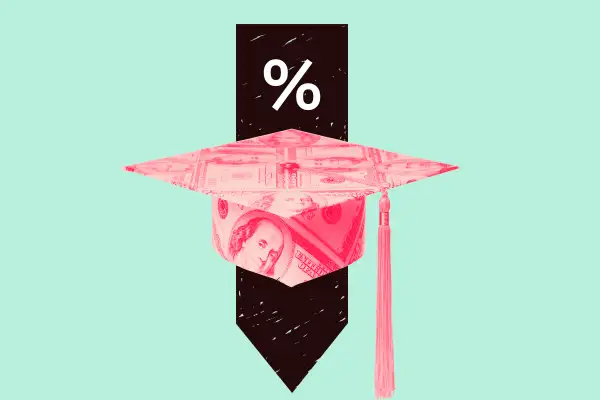President Trump Promised to Waive Student Loan Interest. Here's Everything You Need to Know

The Trump Administration has waived interest on federal student loans in an effort to help alleviate economic hardships brought on by the spread of the new coronavirus.
The move came after some Democratic senators had proposed suspending all monthly student loan payments for six months as part of a broader economic relief package.
It also sent officials at the U.S. Department of Education scrambling to figure out how to put such a policy in place, while at least one financial aid expert is questioning whether a president actually has the authority to waive interest without approval from Congress.
Here's what we know about how it will work.
Which loans qualify?
All federal student loans, which includes Direct Stafford loans (subsidized and unsubsidized), Direct Parent and Graduate PLUS loans, and Direct Consolidation loans.
Also included are some Federal Family Education Loans and Perkins loans, but the key is they must be held by the federal government. The Institute of Student Loan Advisors (TISLA) says most federal family loans and Perkins loans are not federally held and so they’ll continue accruing interest. To figure out if your loans qualify, the Institute recommends logging into http://www.studentaid.gov and checking to see which lender is listed. If the lender is the Department of Education, those loans qualify.
Private loans and loans issued by state lending authorities do not qualify. The Education Department has not explicitly confirmed whether parent loans are included, though those do fit into the qualifying Direct loan categories above. Money will update this story when officials clarify.
When will this take effect and how to I sign up?
Officials said it would start immediately, and that it will be automatic for borrowers. That means loan servicers--the companies that manage student loan repayments for the government--will retroactively waive any interest that has accrued since March 13, the day the Trump administration announced the policy.
Will my monthly bills be lower?
No. While the details were unclear when the president announced the plan, some observers expected it was meant to lower monthly payments to ease the burden on some 35 million federal student loan borrowers.
Since then, loan servicers have clarified that the amount borrowers owe each month will not change. Instead, all of the payments will go toward principal instead of interest. (Note that if you have unpaid interest on your account from before Trump's announcement, your payments will go to that before the principal amount.)
How much does this help borrowers?
Waiving interest is great news for workers who continue to earn a regular paycheck in the coming weeks of economic uncertainty. Those borrowers can essentially attack their principal quicker and shorten their loan term.
And the 60-day forbearance for anyone who wants it will provide some relief for borrowers whose work has been or will be disrupted by ripple effects from the spread of the coronavirus. But this isn't the level of assistance some Democratic lawmakers and consumers advocates were pushing for. Democratic senators, for example, have also pushed for $10,000 in loan forgiveness alongside suspended payments.
However the waiver can help borrowers who are currently in deferment or forbearance, when payments are paused but interest continues accruing. It also gives any borrower who may struggle with bills in the coming weeks the option to put their monthly student loan payment on an interest-free hold (via forbearance).
How long will this last?
At least 60 days, starting from March 13, 2020.
What should I do if I can’t afford my monthly payment?
For quick relief, you can put your loans in forbearance, which is more attractive now with the interest waiver. U.S. Secretary of Education Betsy DeVos said any borrower who asks for a forbearance from their servicer will get one for a two-month period.
"With just two calls or a few clicks of a mouse, you may be able to avoid making payments you cannot afford, or going into default and facing expensive collection fees, garnishments, and a negative mark on your credit report," the National Consumer Law Center writes.
For longer-term relief, you can enroll in an income-driven repayment plan that sets your monthly payments based on how much you're earning. This is better than that forbearance or deferment, because your payments will count toward loan forgiveness (available after 20 years of payments). In forbearance or deferment, you're not making any progress, even if your loans aren't currently growing due to the interest waiver.
TISLA has more guidance on each of your options here.
I’m working toward public service loan forgiveness. How does this affect me?
Borrowers who are aiming to get forgiveness through the Public Service Loan Forgiveness program should not put their loans on forbearance if they can afford to keep paying. That way they can still make progress toward their 120 months of payments to qualify for the program. If you need to recalculate your payments for keep them affordable, you can do that immediately online at studentaid.gov.
Can I do something to get relief on my private loans?
Most private lenders do offer some temporary relief for people experiencing economic hardship, but the policies are not as generous as those of the federal government's. Your best bet right now is to contact your lender and ask what flexibility they can provide.

